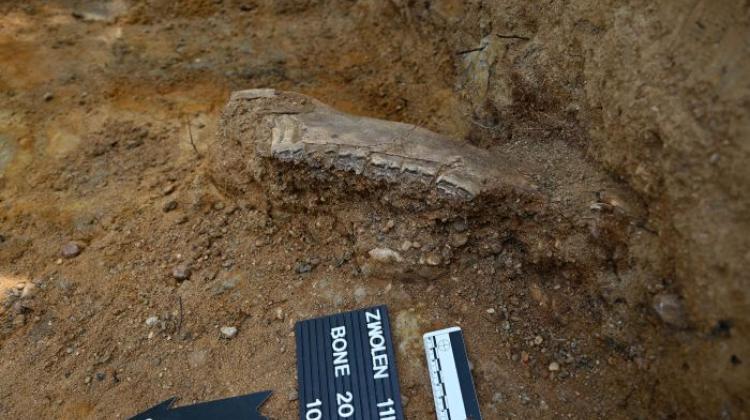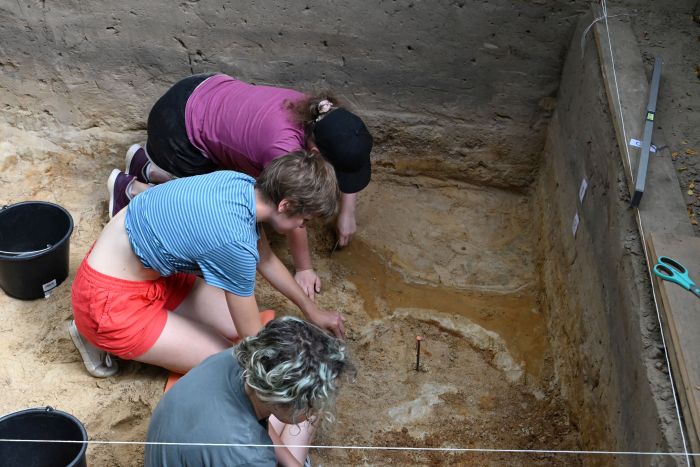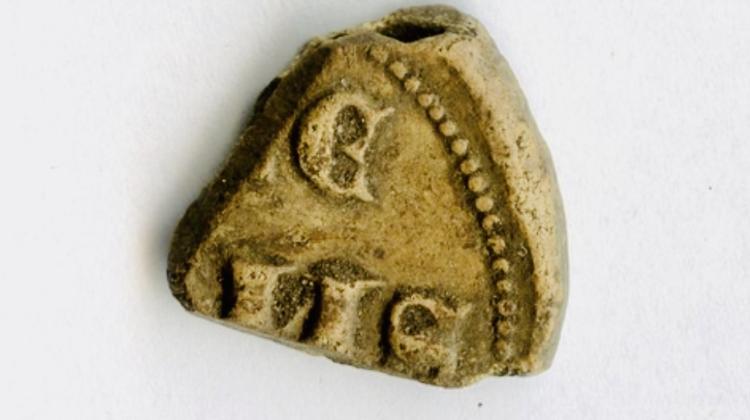Archaeologists return to Zwoleń to examine Neanderthal remains
 Photo from press release
Photo from press release
Archaeologists working in Zwoleń (Masovian Voivodeship) have found animal bones and flint tools from Neanderthal times. They completed the first stage of work at the site, to which scientists returned 30 years after the previous research project.
The basis and starting point for the research were the findings made during excavations carried out in Zwoleń in the 1980s. After analyses of numerous bone and flint materials it was then concluded that Neanderthals had lived in these areas. However, it is still unknown exactly when they appeared there.
'This site is extremely important because it is the northernmost Neanderthal site in Poland. It is also one of the few sites with preserved organic materials, i.e. bones. They are very rarely preserved in open Neanderthal sites, those that are not located in caves. Thanks to this, we can learn a lot about the life of Neanderthals and how they functioned,’ says Dr. Katarzyna Pyżewicz from the University of Warsaw.
When did Neanderthals appear in Zwoleń? Archaeological research at the site is carried out by scientists from the State Archaeological Museum in Warsaw, the Faculty of Archaeology of the University of Warsaw and the Institute of Archaeology of the University of Wrocław. Researchers want to determine when exactly ancient people appeared in the Zwoleńka valley, what their diet consisted of and what their everyday life was like. The project leader Dr. Witold Grużdź from the State Archaeological Museum says that the earlier dating, estimated at 80-65,000 years ago, has a wide range, which is why the date should be determined more accurately.

During the first season of work after a long break, scientists dug two trenches. They reached a layer where they found horse bones, fragments of the animal's jaws and ribs, along with flints. 'We know that they date back to Neanderthal times because of a specific method of flint processing. It was used to produce knives that Neanderthals used when cutting animal carcasses,’ says Dr. Pyżewicz.
The approach to field research and the methods of describing materials have changed over the years. Cooperation with sciences has also developed. Therefore, archaeologists hope that this site - researched years ago - will now reveal new facts about Neanderthals.
'Thanks to the preserved jaws and teeth, isotope analyses can be carried out. Recent years of research on the presence of Neanderthals in Europe have significantly +rejuvenated+ the times during which they lived in these areas, so we will also try to send several samples for C14 radiocarbon dating - which may reach up to 50,000 years ago. For this purpose, we need to check whether collagen remains in the bones. In the future, we will also use OSL dating based on collected sediment samples,’ says Dr. Grużdź.
He adds that this is an early stage of the project scheduled for several years. The results of the first analyses will be available next year.

Where did Neanderthals hunt? 'According to the earlier concept, it was a site where Neanderthals hunted and quartered hunted animals. We want to check whether this interpretation is true, for example based on cuts on animal bones,’ says Dr. Pyżewicz.
He adds that the discovered tools are made of chocolate flint, which does not occur naturally in this place. Neanderthals had to walk 30-40 kilometres to obtain it. 'So they brought some of the tools with them, but they also processed local raw materials. We are very curious how they dealt with the flint,’ the researcher says.

Why are Neanderthal human remains difficult to find? Most of the Neanderthal sites known in Poland are in the Kraków-Częstochowa Upland and Lower Silesia. They are located primarily in the south, because at the time when Neanderthals were present in this part of Europe, most of the area of central and northern Poland was covered by ice. The oldest remains of Neanderthal man identified in Poland so far come from Cave Ciemna and are approximately 115,000 years old.
'Neanderthal finds are rare. Whatever happens in this field is of great value and provides new data. These sites are often hidden several meters below the surface, so they are difficult to find,’ says Dr. Pyżewicz.
Scientists consider Neanderthals 'brothers', not ancestors of modern humans. They belonged to an extinct line of homo sapiens. For a long time, representatives of this species were presented in an unfavourable way, as quite primitive creatures. However, recent research indicates that this species of man has much more in common with us than previously thought. Researchers found, for example, that Neanderthals were the creators of some of the rock paintings known from European caves - those estimated to be over 64,000 years old. In addition, DNA tests revealed that modern humans interbred with Neanderthals.
PAP - Science in Poland, Ewelina Krajczyńska-Wujec
ekr/ zan/ kap/
tr. RL
Przed dodaniem komentarza prosimy o zapoznanie z Regulaminem forum serwisu Nauka w Polsce.


















